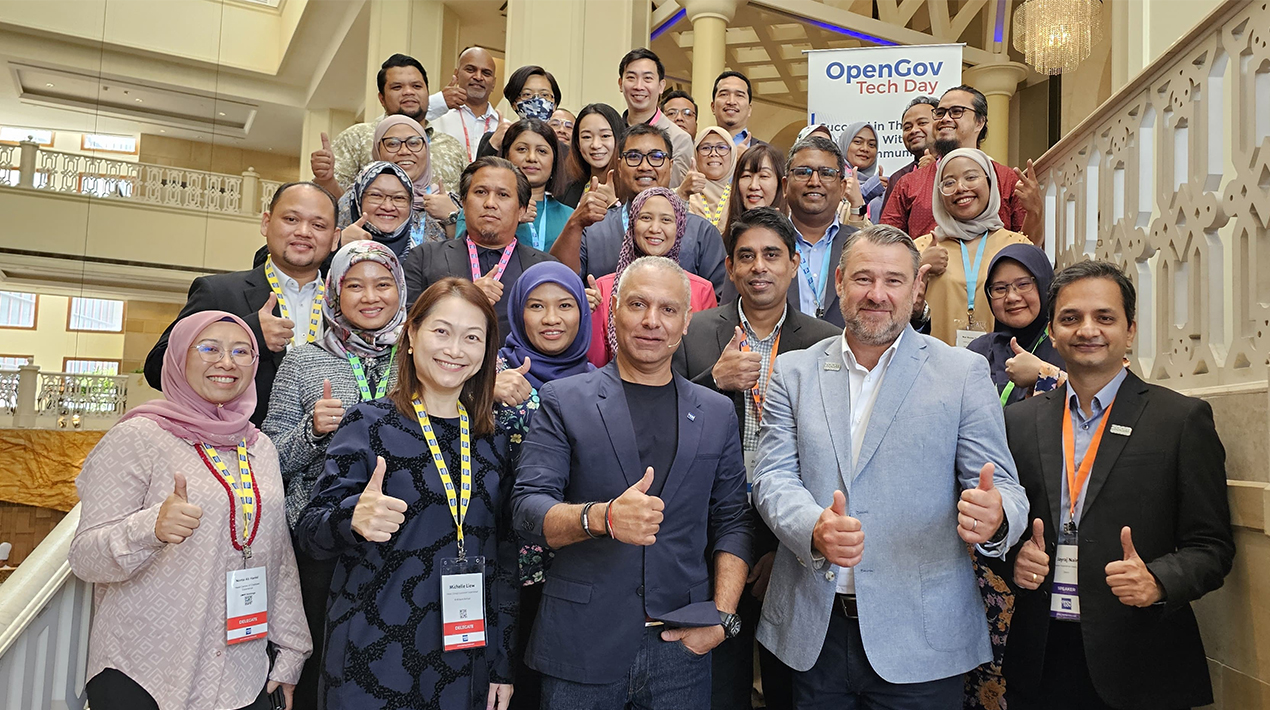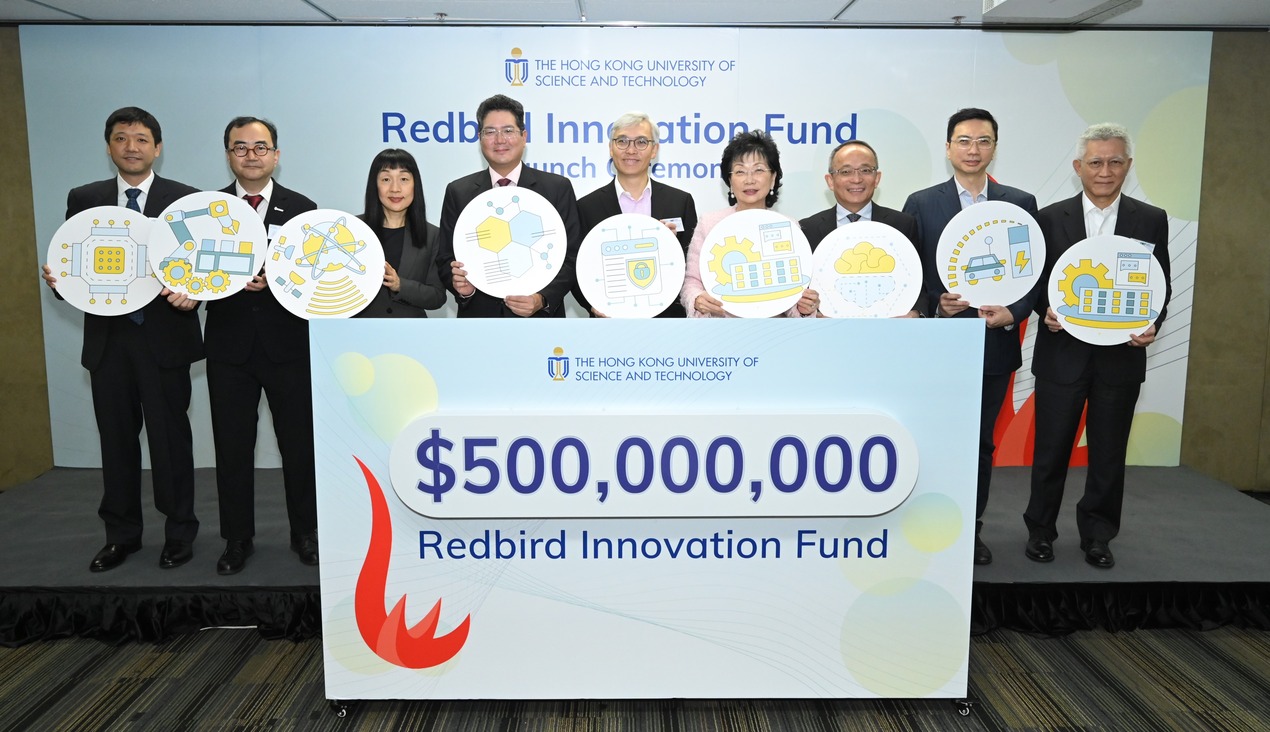
|
Getting your Trinity Audio player ready...
|
In the dynamic landscape of the digital era organisations are undergoing a paradigm shift in communication strategies, with the adoption of Cloud Communications emerging as a crucial catalyst for success.
In the digital era, the evolution of communication demands a fundamental reassessment by organisations, and at the forefront of this revolution is Cloud Communications. Offering a flexible and scalable infrastructure that goes beyond traditional boundaries, it establishes a centralised platform for communication, collaboration, and information sharing, overcoming the limitations of geographical location and device constraints.
Cloud Communications, particularly within the realm of modern Unified Communications as a Service (UCaaS), unleashes transformative potential by fostering innovation and flexibility and enhances overall organisational agility in the creation of a collaborative workplace. UCaaS represents the evolution of communication technologies, seamlessly integrating diverse communication channels like voice, video, messaging and collaboration tools into a unified platform.
By providing features like instant messaging, presence, and integrated voice and video conferencing, UCaaS empowers teams to collaborate seamlessly, regardless of their physical location. It modernises workplace communication, fostering an environment where employees can more easily connect, share ideas, and collaborate in real-time. This not only enhances productivity but also contributes to the development of a more agile and responsive organisation.
At the core of Cloud Communications is the drive to cultivate a collaborative workplace, where UCaaS takes a pivotal role in breaking down silos and facilitating meaningful interactions. A significant advantage of Cloud Communications lies in its intrinsic flexibility and scalability, allowing organisations to adapt to evolving business needs by leveraging the scalable nature of UCaaS
Whether accommodating a remote workforce, expanding operations, or integrating new communication tools, UCaaS ensures that organisations can evolve without the constraints of traditional communication infrastructures.
The success of any communication platform hinges on a seamless and intuitive user experience, and UCaaS plays a pivotal role in achieving this by offering a unified interface for various communication tools. This simplification not only enhances user adoption but also streamlines the IT infrastructure, diminishing the complexity associated with managing multiple communication channels.
Security is a paramount concern in the digital era, and Cloud Communications addresses this concern through robust security measures. Encryption, multi-factor authentication and secure data transmission protocols embedded in UCaaS ensure the protection of sensitive information. These measures not only foster a secure collaborative environment but also instil trust in the reliability of Cloud Communications.
The OpenGov Tech Day on 21 November 2023 at the Sheraton Imperial, Kuala Lumpur Hotel discussed the latest cloud technology trends and benefits for key sectors in Malaysia, including public, enterprise, education, financial services and healthcare.
Opening Remarks

Mohit Sagar, CEO and Editor-in-Chief of OpenGov Asia states that “communication is at the heart of teamwork”. Particularly in the digital age, promoting teamwork and progress hinges significantly on maintaining openness and effective communication.
The ongoing evolution of innovation and the expanding, boundless nature of workspaces underline the necessity for humans to adapt not just to novel communication methods but also to the overall evolution of work itself. Technological progress has led to an open work environment facilitating cross-border collaboration, remote work, and real-time exchange of ideas, transcending physical limitations.
Mohit stresses that adaptability in communication is not only a need but also a necessity in today’s increasingly connected and dynamic environment. Team members should possess the ability to comprehend and utilise diverse communication platforms, be attuned to varying communication styles among colleagues, and enhance their adaptability to the ongoing shifts in information dynamics.
Sustaining constant innovation requires not just adaptability in communication but also flexibility, a comprehension of evolving work cultures, and an insatiable thirst for knowledge. This underscores the importance of cultivating flexible thinking and robust communication skills across various frameworks, such as meeting presentations, online collaboration, and assimilating information from multiple sources.
A pivotal force propelling the virtual communication era is the infrastructure supporting efficient communication, with User Experience (UX) playing a crucial role. A positive user experience, primarily reliant on an interface that is easy to use, intuitive, and understandable, directly contributes to seamless and effective communication.
The quality of the user experience on a virtual communication platform is significantly impacted by how people interact and collaborate. A user-friendly interface, as well as easily accessible features, ensure that users can focus on the message’s content or communication goals, rather than technical obstacles or platform confusion. The user-friendly interface reduces communication barriers, creates more efficient channels for information exchange, and promotes productive collaboration.
Additionally, features that support various aspects of communication, such as visual collaboration, document sharing, or online meetings, in a single integrated platform are critical. This provides a more holistic experience for users, reduces the need for multiple platforms, which can make coordination difficult, and ensures a focus on communication objectives.
The importance of employing video as a communication tool is steadily gaining traction in the contemporary workplace. The rapid growth of video communication is attributed to its capacity to introduce a new dimension to interpersonal interactions. It encompasses not only verbal communication but also incorporates visual elements, enabling facial expressions, body language, and visual context to enrich the overall communication experience.
“Video in workplace communications provides a richer and deeper platform for collaboration. This enables richer information sharing, deeper understanding, and the possibility of engaging in more dynamic and meaningful discussions,” explains Mohit. “Even in remote working situations, team members can feel each other’s presence through video.”
Video has become indispensable in the contemporary workplace, where remote work and flexibility are increasingly embraced to preserve the personalised aspects of communication. Despite team members being geographically dispersed, the accessibility of video conferencing tools and advanced visual collaboration platforms enables interactions that closely mirror those of in-person meetings, thanks to the sophistication of evolving technology.
“Video is not only an effective communication tool, but also a medium for building closer team relationships, increasing engagement, and increasing collaboration across teams globally,” Mohit concludes.
Technology Insights

Nathan Guy, Head of UCaaS, Asia Pacific, at Zoom, acknowledges the consistent challenges faced by support leaders across diverse company sizes, from SMBs to larger enterprises. These challenges centre around the need to achieve more with limited resources and the ever-growing demand for responsive and proactive customer service.
To navigate these challenges, support leaders strategically employ a blend of technology and automation while maintaining agility to adapt to evolving business landscapes.
In scaling their teams effectively, support leaders must prioritise the integration of innovative tools and technologies that deliver enhanced outcomes without incurring exorbitant costs. The goal is to optimise support operations, boost productivity, and uphold a high level of customer service, especially during peak periods like Black Friday or the holiday season.
In the realm of customer service, seamless support across multiple channels, such as phone, video, and webchat, is paramount. A negative experience can drive customers to consider switching to competitors, emphasising the critical role of technology in enhancing user and customer experiences.
“According to a Gartner survey, over 60% of customers would contemplate moving their business due to a poor customer experience,” Nathan explains. “This presents a significant risk for businesses, and technology is now driving a differentiation strategy to enhance user and customer experiences.”
Zoom’s AI innovation focuses on empowering individuals and teams, ensuring responsible use prioritising privacy and security, and adopting a federated approach that adapts to industry evolution. Their Customer Experience portfolio includes Zoom Contact Centre, Zoom Virtual Agent, and a new Workforce Engagement Management (WEM) offering, addressing the changing dynamics of the future workplace.
As businesses grapple with economic uncertainty and budget reductions, Nathan stresses the importance of establishing a robust technology foundation for stability and growth. Key elements include a cloud and mobile-first approach, prioritising employee engagement, fostering flexibility, enabling real-time collaboration, and promoting emotional well-being.
Zoom’s commitment to a solid technology infrastructure is evident in its communication and collaboration solutions tailored to diverse needs. The integration of AI further enhances the collaboration experience across Zoom’s solutions, aligning with their ultimate focus on serving customers and their employees to thrive in the new era of work.
Nathan recognises the critical role of customer-facing teams in providing exceptional experiences. Empowering these teams as subject matter experts enables businesses to deliver personalised and delightful experiences, aligning with Zoom’s overarching mission to facilitate success in the evolving landscape of work.
“Customer-facing teams need to address various challenges to provide an exceptional customer experience,” Nathan knows well. “By empowering these teams to become subject matter experts, businesses can deliver personalised experiences that delight customers.”

Jayraj Nair, Customer Experience Lead-ASEAN at Zoom, underscores the primary objective of amalgamating all product innovations into a unified solution. This holistic solution aims to empower knowledge workers and teams, fostering seamless collaboration internally and with external customers, ultimately propelling business growth.
The spectrum of employee collaboration activities spans calendar management, chat, email management, meeting collaboration, casual huddles, and task conclusion with phone calls. In contrast, customer collaboration encapsulates marketing events, webinars, sales processes, and delivering a unified customer experience, all within a singular interface.
The adverse impact of subpar customer experiences on businesses is substantial, particularly in today’s landscape where meeting customer needs demands personalised and insightful interactions despite limited resources. Studies underscore these challenges and highlight the escalating expectations of consumers.
A global Metrigy survey identifies “customer satisfaction” as the top business priority for 2022 and 2023, surpassing other concerns like product and service quality, information security, and revenue generation. Jayraj stresses the criticality of consistently delivering excellent customer experiences, as even a few negative encounters can result in a loss of 60% of customers.
Despite this, only 33% of customers believe that customer service organisations are improving. Recognising the need for digital engagement channels, customer service organisations are actively adapting to address emerging trends and priorities, aligning with Gartner’s predictions of increased spending on digital transformation, artificial intelligence (AI), and security.
Organisations providing a total experience connecting employees and customers are projected to outperform competitors in satisfaction metrics by 25% in both customer experience (CX) and employee experience (EX) by 2024. However, delivering a consistently excellent customer experience becomes challenging when EX and CX strategies are developed independently.
Recognising the interconnectedness of EX and CX and aligning strategies accordingly can lead to more seamless and satisfying experiences for both employees and customers. The integration of employee productivity and customer experience is expected to emerge as a prominent trend for 2023.
A significant challenge in delivering excellent customer experience is the presence of teams working in silos with different tools, hindering effective communication and collaboration. A report suggests that by 2026, around 60% of large enterprises will leverage the concept of total experience to transform their business models.
Zoom addresses these challenges by offering an end-to-end capability for both employee experience (EX) and customer experience (CX) through its cloud-based Zoom Platform. In 2022 alone, the company released over 1,500 new features and products, showcasing remarkable product innovation and expansion.
Zoom’s comprehensive collaboration solutions, including Zoom Phone, Zoom Events, Webinars, Meetings, Zoom Spaces, and developer tools, cater to both employee and customer experience. Their CX products, such as Zoom Contact Centre, Zoom Virtual Agent, and Zoom IQ, further emphasise their commitment to providing comprehensive solutions.
Jayraj highlights that Zoom’s Contact Centre, a video-first omnichannel Contact Centre-as-a-Service (CCaaS) solution, is included in the Zoom platform. It enables businesses to deliver prompt, efficient, and highly personalised customer experiences that drive loyalty and retention.
Zoom Contact Centre integrates unified communications with customer experience, allowing businesses to engage with customers naturally and efficiently. Advanced features like skills-based routing and an intelligent virtual agent enhance the ability to provide concierge-like experiences at scale.
Zoom Virtual Agent, operating 24/7 across multiple support channels, ensures fast and personalised customer experiences, reduces call volumes for human agents, and generates significant operational efficiencies. It can be seamlessly integrated with Zoom Contact Centre and other leading CRM and contact centre solutions.
“All these innovations showcase Zoom’s commitment to providing comprehensive solutions that cater to the evolving needs of organisations in enhancing both EX and CX,” Jayraj concludes.
Closing Remarks
Nathan Guy, Head of UCaaS for Asia Pacific at Zoom underscored the transformative potential of cloud communications and highlighted the pivotal role of UCaaS in fostering collaboration within the modern workplace.
The revolutionary shift was brought about by the seamless integration of communication channels – voice, video, messaging, and collaborative tools – into a unified platform. Cloud communications reshape how teams connect and collaborate, breaking down geographical boundaries and enhancing productivity.
 Nathan recognises that promoting collaboration in the workplace is not merely a trend but an essential requirement, positioning UCaaS as a strategic facilitator to dismantle silos, boost productivity and cultivate an environment conducive to the flourishing of ideas.
Nathan recognises that promoting collaboration in the workplace is not merely a trend but an essential requirement, positioning UCaaS as a strategic facilitator to dismantle silos, boost productivity and cultivate an environment conducive to the flourishing of ideas.
Taking into consideration the paramount concern of safeguarding sensitive information in the digital landscape, the robust security measures embedded in UCaaS, including encryption and multi-factor authentication, ensure a foundation of trust for secure collaboration in the cloud. This emphasis on security underscores the commitment to maintaining a secure environment for sensitive data within UCaaS.
Nathan advocates for organisations to not only recognise the evolving landscape of the digital era but also to proactively embrace it by adopting the most fitting communication tools and strategic plans. In today’s dynamic business environment, adaptability is crucial for overcoming challenges and seizing opportunities.
Highlighting the importance of selecting appropriate communication tools, Nathan underscored the necessity for organisations to align their technology choices with their specific needs and goals. He repeated that a one-size-fits-all view is inadequate in a diverse and rapidly changing digital ecosystem, urging decision-makers to meticulously assess and choose tools that meet their unique requirements. This ensures a seamless integration that enhances collaboration, productivity, and overall operational efficiency.
Nathan stressed the importance of strategic thinking in tandem with adopting these communication tools. He concurs that technology alone cannot guarantee success; it requires a well-thought-out strategy that aligns technology implementation with broader organisational objectives. This approach involves considering factors such as scalability, security, and future-proofing to ensure that the chosen communication tools can adapt and grow along with the organisation.
Mohit underscored the critical importance of not only embracing technological advancements but, more significantly, strategically integrating these innovations into operations. Moreover, integration should be conducted in a manner that closely aligns with the specific objectives and goals of the organisation. This strategic alignment is essential for organisations to harness the full potential of technological advancements and navigate the evolving landscape of technology effectively.
Mohit underscored the paramount importance of adaptability in navigating the complexities of the digital era. Recognising the ever-evolving nature of the contemporary digital landscape, he acknowledges the strategic significance of aligning communication technologies with organisational goals.
Genuine transformation stems from a profound understanding of the dynamic nature of technology and its rapid evolution. As such, true success cannot be had merely in the adoption of advanced communication tools, Mohit believes, but in their thoughtful and seamless integration into the organisational framework.
Mohit reiterated the transformative impact of UCaaS, highlighting its capacity to transcend geographical boundaries and reshape the conventional notion of office spaces. The substantial shift from traditional setups to dynamic ecosystems has been facilitated by UCaaS connectivity, signifying a departure from the limitations imposed by physical locations. This empowerment allows individuals to contribute their expertise and talents irrespective of their geographic presence.
The collaborative power of UCaaS is exemplified by its capacity to create a virtual environment where teams can seamlessly communicate, collaborate, and innovate. The platform enables real-time interactions, breaking down barriers imposed by distance and fostering a sense of unity among individuals dispersed across various locations.
“Regardless of where individuals are situated, UCaaS ensures that each team member can actively participate, share ideas, and contribute their best efforts,” Mohit concludes. “This democratisation of collaboration not only enhances productivity but also nurtures a diverse and inclusive work culture.”
















